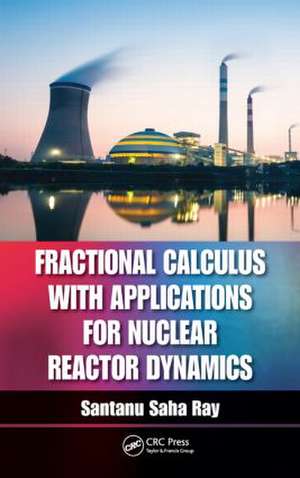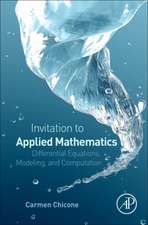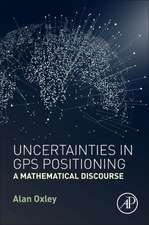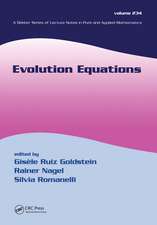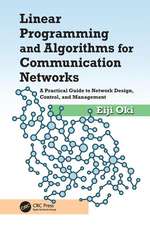Fractional Calculus with Applications for Nuclear Reactor Dynamics
Autor Santanu Saha Rayen Limba Engleză Hardback – 29 iul 2015
While deemed nonessential in the past, fractional calculus is now gaining momentum in the science and engineering community. Various disciplines have discovered that realistic models of physical phenomenon can be achieved with fractional calculus and are using them in numerous ways. Since fractional calculus represents a reactor more closely than classical integer order calculus, Fractional Calculus with Applications for Nuclear Reactor Dynamics focuses on the application of fractional calculus to describe the physical behavior of nuclear reactors. It applies fractional calculus to incorporate the mathematical methods used to analyze the diffusion theory model of neutron transport and explains the role of neutron transport in reactor theory.
The author discusses fractional calculus and the numerical solution for fractional neutron point kinetic equation (FNPKE), introduces the technique for efficient and accurate numerical computation for FNPKE with different values of reactivity, and analyzes the fractional neutron point kinetic (FNPK) model for the dynamic behavior of neutron motion. The book begins with an overview of nuclear reactors, explains how nuclear energy is extracted from reactors, and explores the behavior of neutron density using reactivity functions. It also demonstrates the applicability of the Haar wavelet method and introduces the neutron diffusion concept to aid readers in understanding the complex behavior of average neutron motion.
This text:
- Applies the effective analytical and numerical methods to obtain the solution for the NDE
- Determines the numerical solution for one-group delayed neutron FNPKE by the explicit finite difference method
- Provides the numerical solution for classical as well as fractional neutron point kinetic equations
- Proposes the Haar wavelet operational method (HWOM) to obtain the numerical approximate solution of the neutron point kinetic equation, and more
Preț: 1349.99 lei
Preț vechi: 1894.83 lei
-29% Nou
Puncte Express: 2025
Preț estimativ în valută:
258.36€ • 268.73$ • 213.29£
258.36€ • 268.73$ • 213.29£
Carte tipărită la comandă
Livrare economică 14-28 aprilie
Preluare comenzi: 021 569.72.76
Specificații
ISBN-13: 9781498727273
ISBN-10: 1498727271
Pagini: 236
Ilustrații: 93 black & white illustrations, 49 black & white tables
Dimensiuni: 156 x 234 x 18 mm
Greutate: 0.52 kg
Ediția:1
Editura: CRC Press
Colecția CRC Press
ISBN-10: 1498727271
Pagini: 236
Ilustrații: 93 black & white illustrations, 49 black & white tables
Dimensiuni: 156 x 234 x 18 mm
Greutate: 0.52 kg
Ediția:1
Editura: CRC Press
Colecția CRC Press
Cuprins
Mathematical Methods in Nuclear Reactor Physics. Neutron Diffusion Equation Model in Dynamical Systems. Fractional Order Neutron Point Kinetic Model. Numerical Solution for Deterministic Classical and Fractional Order Neutron Point Kinetic Model. Classical and Fractional Order Stochastic Neutron Point Kinetic Model. Solution for Nonlinear Classical and Fractional Order Neutron Point Kinetic Model with Newtonian Temperature Feedback Reactivity. Numerical Simulation Using Haar Wavelet Method for Neutron Point Kinetic Equation Involving Imposed Reactivity Function. Numerical Solution Using Two- Dimensional Haar Wavelet Method for Stationary Neutron Transport Equation in Homogeneous Isotropic Medium. References.
Notă biografică
Dr. Santanu Saha Ray is an associate professor at the National Institute of Technology, Rourkela, India. He earned a Ph. D. in applied mathematics at Jadavpur University. He is a member of SIAM, the AMS, and the Indian Science Congress Association, and serves as the editor-in-chief for the International Journal of Applied and Computational Mathematics. Dr. Saha Ray has done extensive work in the area of fractional calculus and its role in nuclear science and engineering.
Recenzii
"The textbook covers a wide range of models and methods for neutron transport and will be a welcome addition to many undergraduate and graduate courses. Graduate students working in nuclear engineering neutron transport area will appreciate the details of the methods, and will find this book useful to guide their research."
—Igor A. Bolotnov, Department of Nuclear Engineering, North Carolina State University
"I have read the two sample chapters provided with me. I found no irregulaity in these two chapters. The table of content is absolutely ideal. This book focuses on the application of fractional calculus to describe the physical behavior of nuclear reactors. The sample chapters reflect the concept of the subject fairly.
In my opinion this book will be indispensable in the field of nuclear reactor science and engineering."
—Dr. Rasajit Kumar Bera, M. Sc. (Applied Maths., Gold Medalist), Ph. D.(Sc.), Retired Professor & Head of the Department of Science, National Institute of Technical Teacher’s Training and Research (Eastern Region), Block-FC, Sector-III, Salt Lake City, Kolkata-700106, India
—Igor A. Bolotnov, Department of Nuclear Engineering, North Carolina State University
"I have read the two sample chapters provided with me. I found no irregulaity in these two chapters. The table of content is absolutely ideal. This book focuses on the application of fractional calculus to describe the physical behavior of nuclear reactors. The sample chapters reflect the concept of the subject fairly.
In my opinion this book will be indispensable in the field of nuclear reactor science and engineering."
—Dr. Rasajit Kumar Bera, M. Sc. (Applied Maths., Gold Medalist), Ph. D.(Sc.), Retired Professor & Head of the Department of Science, National Institute of Technical Teacher’s Training and Research (Eastern Region), Block-FC, Sector-III, Salt Lake City, Kolkata-700106, India
Descriere
This book covers the applications of new analytical and numerical methods, including wavelet methods to explain the physical behavior of nuclear reactors. Fractional calculus represents the reactor more closely than classical integer order calculus. The reactor kinetics model has therefore been presented in this context and analytical and numerical solutions have been provided. Describing the reactor through fractional calculus helps readers understand fractional order control and achieve overall plant efficiency.
